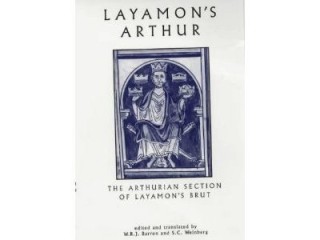
Layamon biography
Date of birth : -
Date of death : -
Birthplace : United Kingdom
Nationality : British
Category : Arhitecture and Engineering
Last modified : 2011-09-14
Credited as : poet, Law Man, Brut
The English poet Layamon (active ca. 1200), or Law man, is best known for his "Brut", an important work in the development of the Arthurian legend.
In the beginning of his long Historia Brutonum, or Brut, Layamon gives a brief introduction to himself and tells of his inspiration to undertake so vast a work. He was a parish priest of Lower Areley, or Areley Regis, a village on the Severn River in Worcestershire. An educated man, he was an inveterate reader of old books and a collector of tales and legends. Among his books were an English translation of Bede and Le Roman de Brut by the Anglo-Norman poet Wace. Wace's book, which is a translation of Geoffrey of Monmouth's Historia regum Britanniae, fired Layamon with the desire to write an English version. In such manner were the Latin of Geoffrey of Monmouth and the French Geste of Wace siphoned into the English literary tradition.
The Norman conquest of 1066 was an accomplished fact. Lords, lay and ecclesiastical, were French or Anglo-Norman. The great schools of the monastic foundations taught Latin and French as a matter of course. Only in the heart of a simple country priest resided the urge to tell Englishmen in their own language the glories of their own noble leaders.
Like most medieval writers, Layamon would lay no claim to originality. All respectable literature had a genealogy. But though he named Wace, with some minor help from Bede and others, as his source, his book runs to more than double the length of Wace's Geste. Layamon expanded, inserted, omitted, and transformed the passages of indirect discourse into dramatic speech. Nor was this artistic freedom his only departure from the originals. He transmuted the romance of the French trouvere into the high seriousness of the English heroic narrative. Nowhere is this more evident than in his treatment of Arthur, whom he introduced into English history. To Arthur he devoted a full third of the Brut, giving him the status and character of an early English leader whose virtues fitted him to take his proper place with the kings and warriors of the Beowulf tradition.
Layamon's prosody is unique. If the classical Old English heroic verse with its four accented, alliterative patterns, a caesura dividing the two half lines, had not been cultivated for some time, there were popular traditional echoes of it in much of the oral composition still holding its own. There were also models of French usage in Wace, in the lais of Marie de France, and in the many hymns and songs that must have penetrated even far-off villages in Worcestershire. At any rate, Layamon employed a loosely alliterative line, many of the half lines scanning on two strong accents. There is also some evidence of syllabic count, an entire absence of kennings, and little of the old poetic vocabulary. The Brut contains some true rhyme, some imperfect rhyme, and a good deal of assonance.
Layamon was plainly on the road that led to the more sophisticated metrical experiments of Geoffrey Chaucer. Yet this early synthesis produced a most useful poetic form for Layamon's unhampered, dignified, and vigorous narrative. His Brut was one of the two secular poems (the other is The Owl and the Nightingale) that foreshadowed the English literary resurgence.
Two books that give both text and a discussion of textual difficulties are Niels Bagholm, The Layamon Texts: A Linguistical Investigation (1944), and George Leslie Brooks and R. F. Leslie, eds., Layamon: Brut (1963). J. A. W. Bennett and G. V. Smithers, Early Middle English Verse and Prose (1966), contains in section X compact introductory notes and 174 lines of the Brut; the other studies in the work are valuable since they provide a context for the understanding of Middle English literature. Also useful is Roger Sherman Loomis, ed., Arthurian Literature in the Middle Ages: A Collaborative History (1959).
















